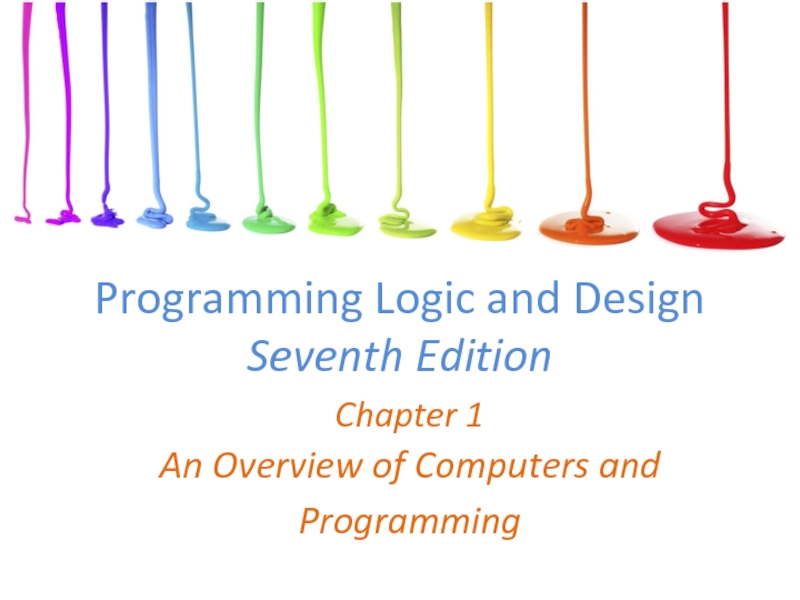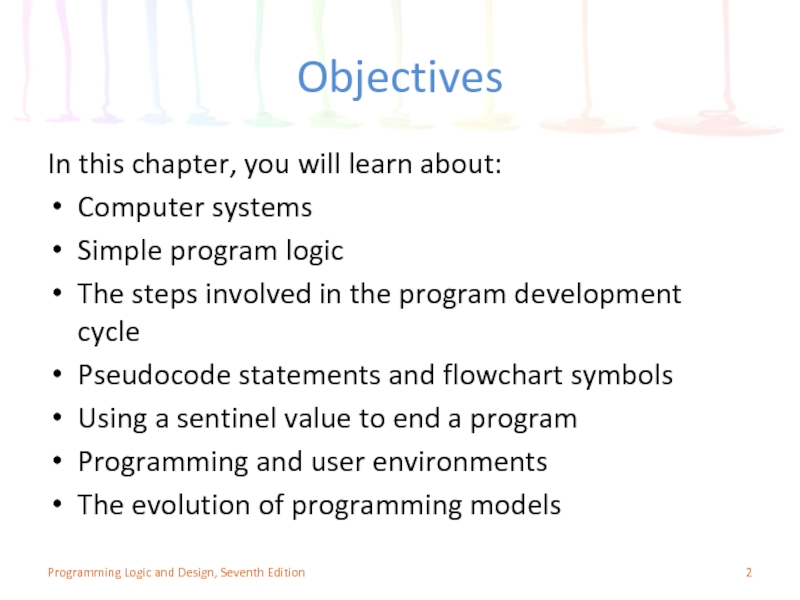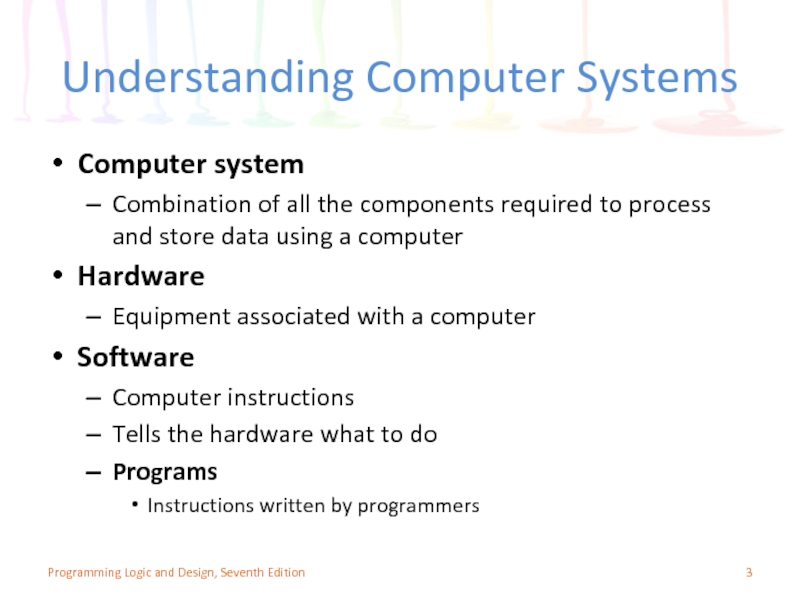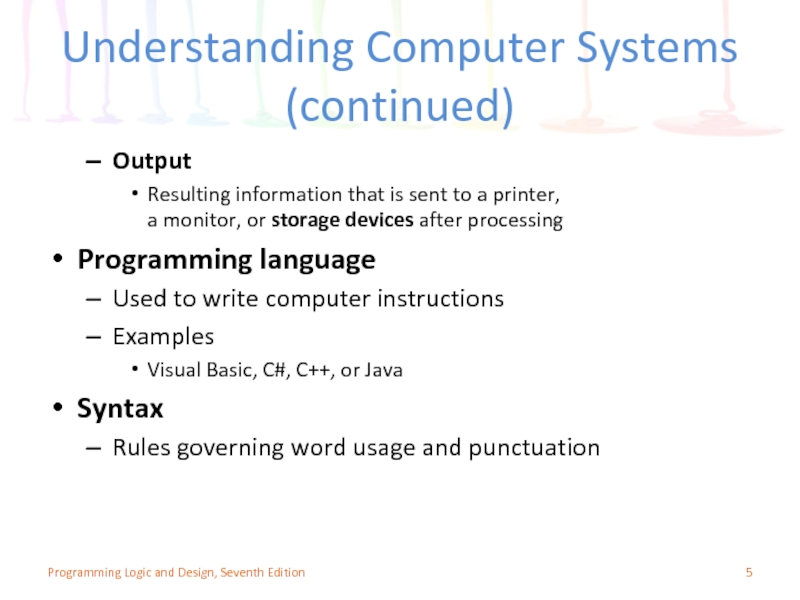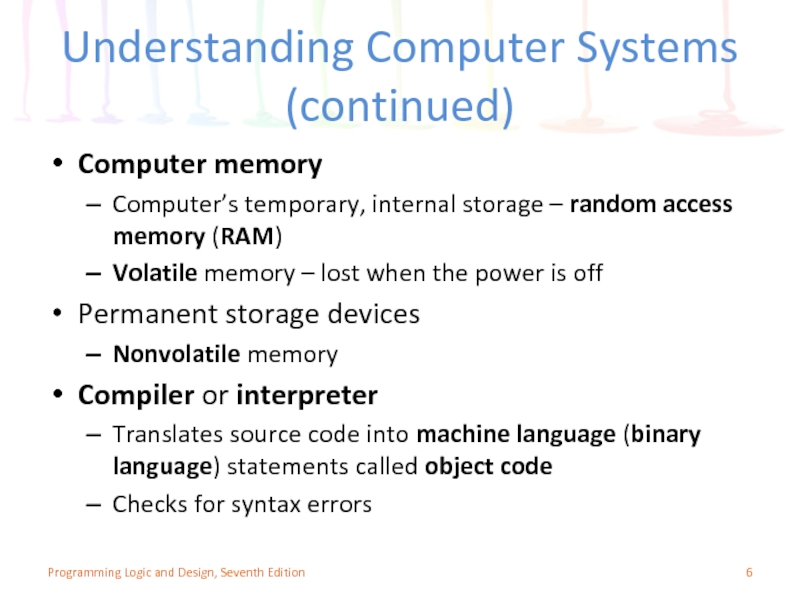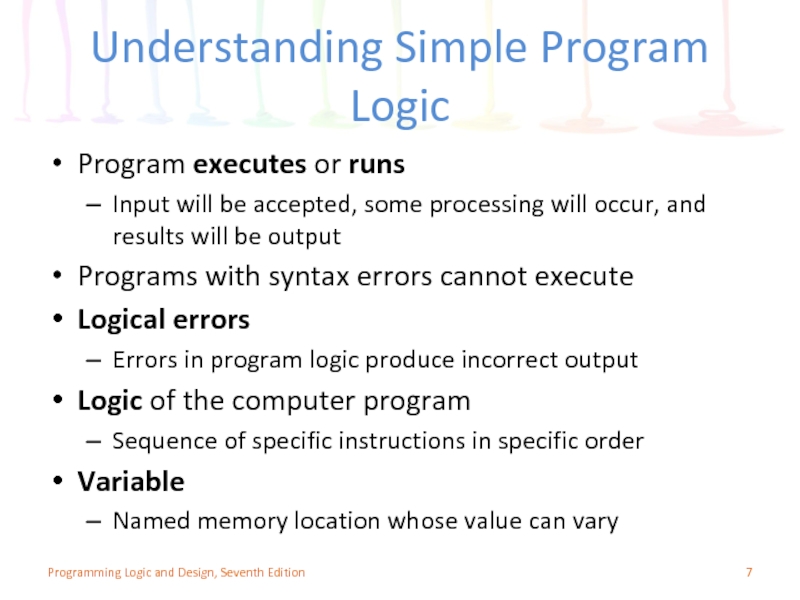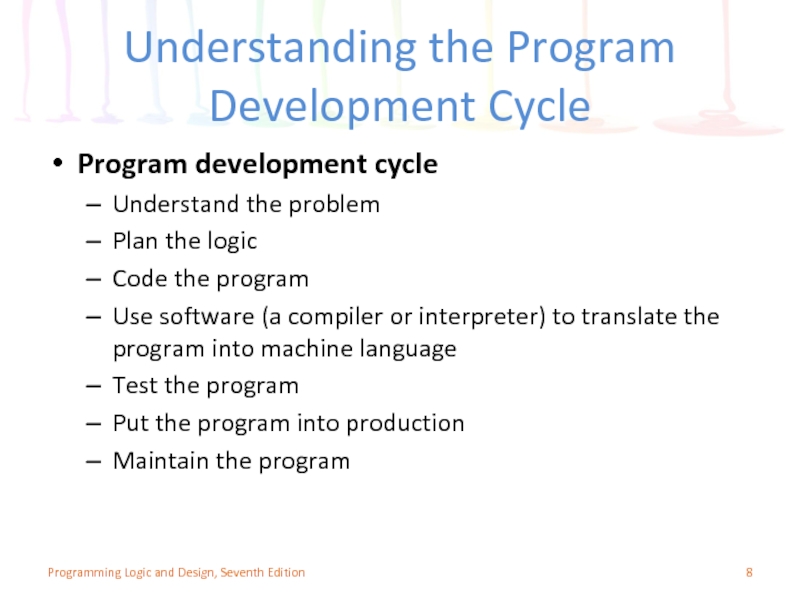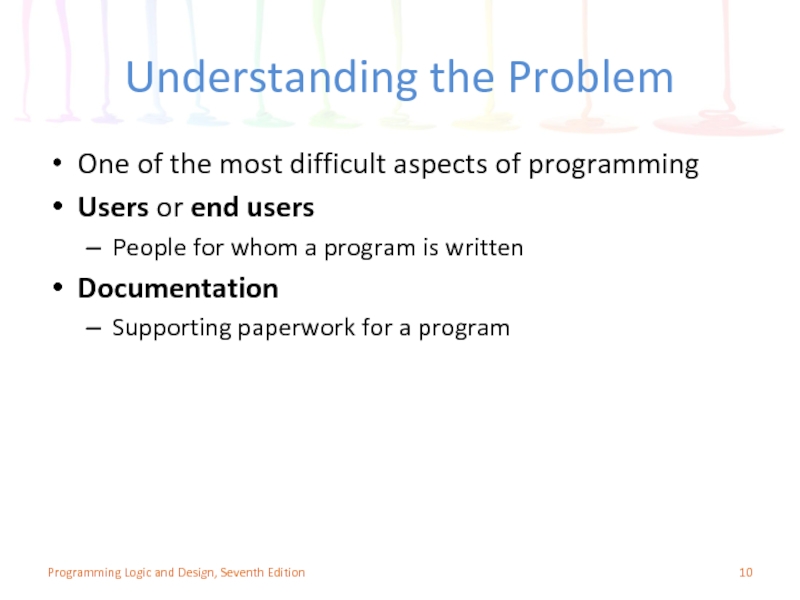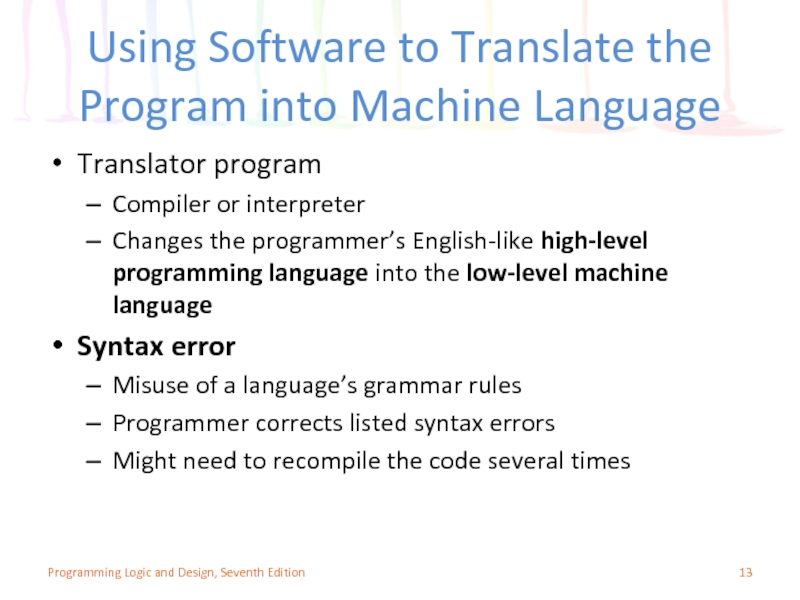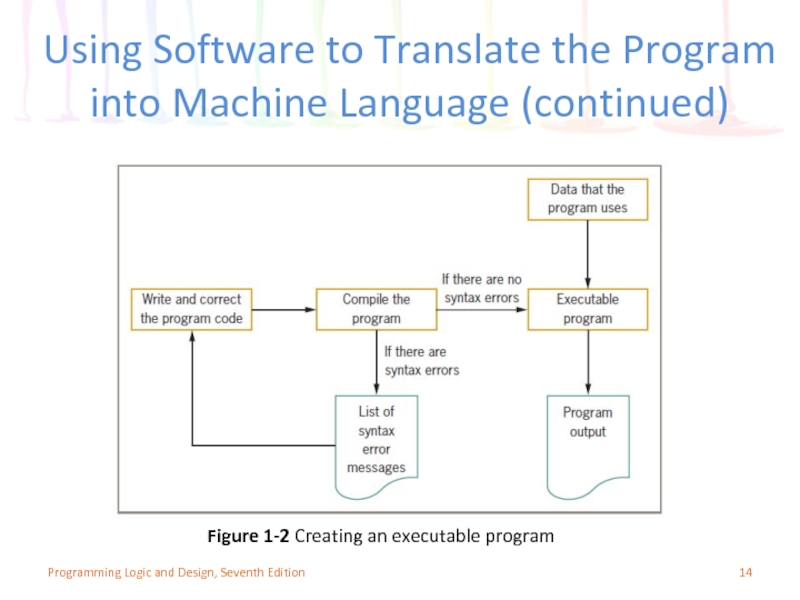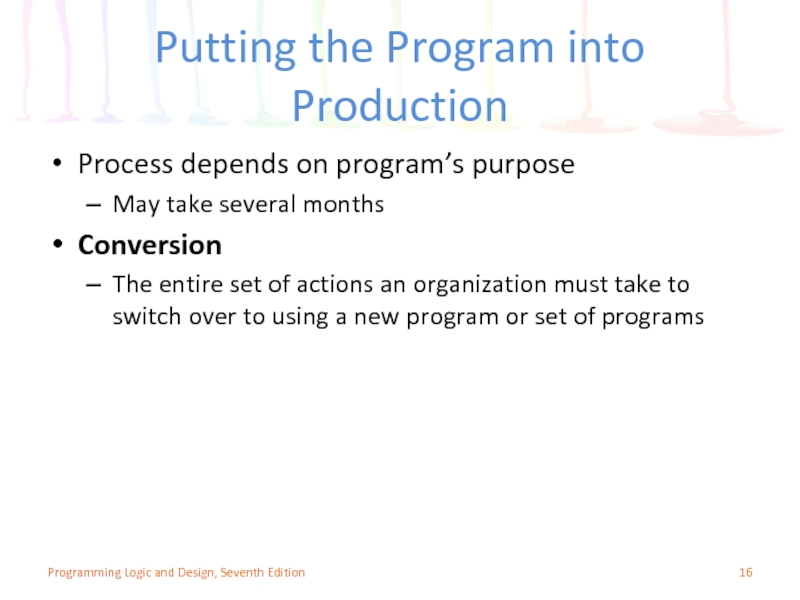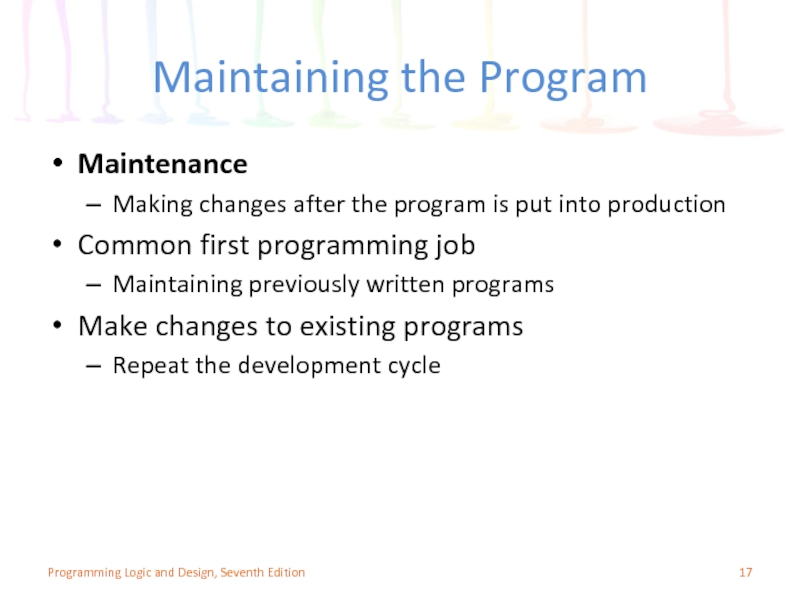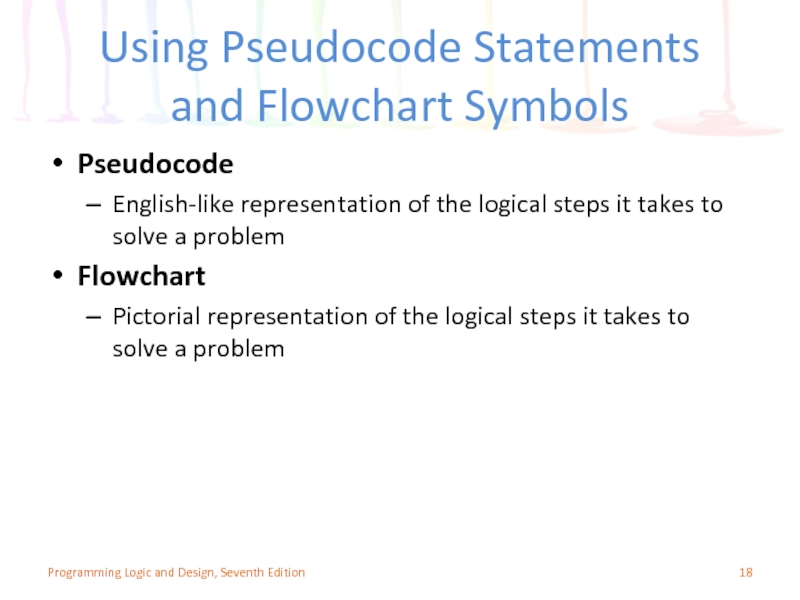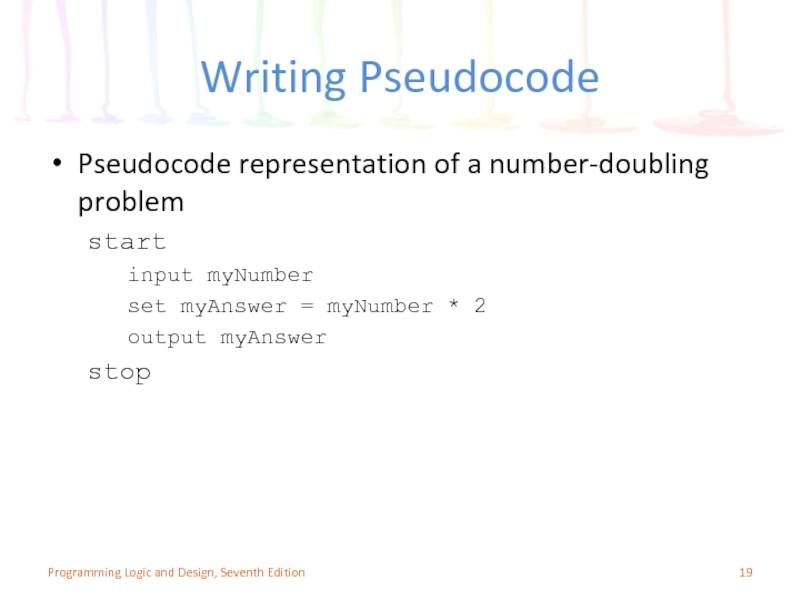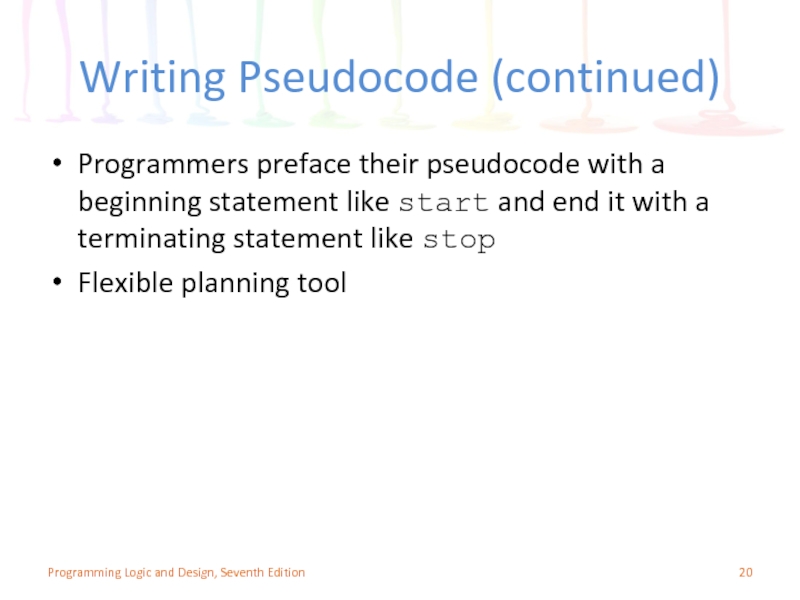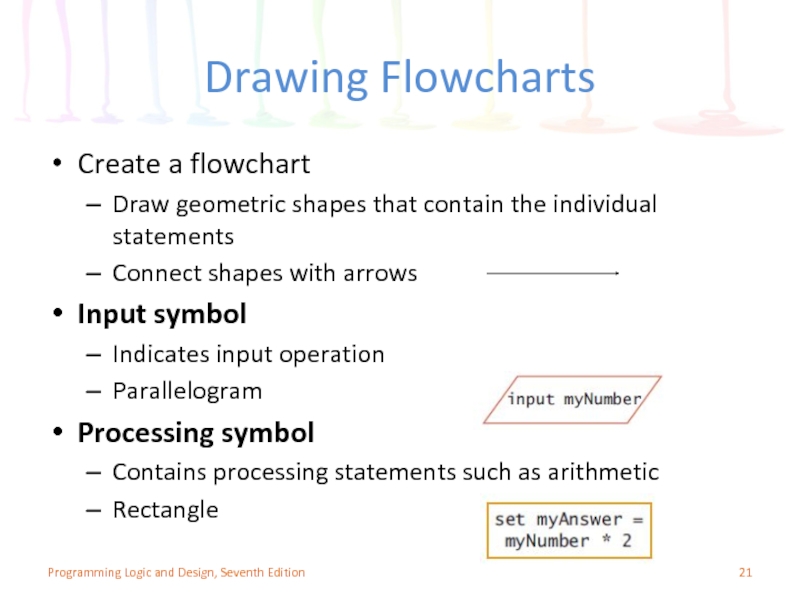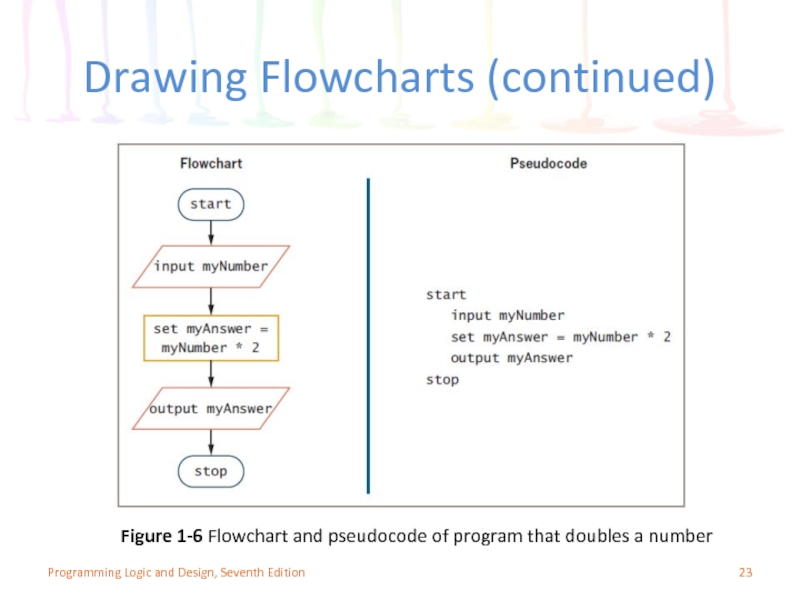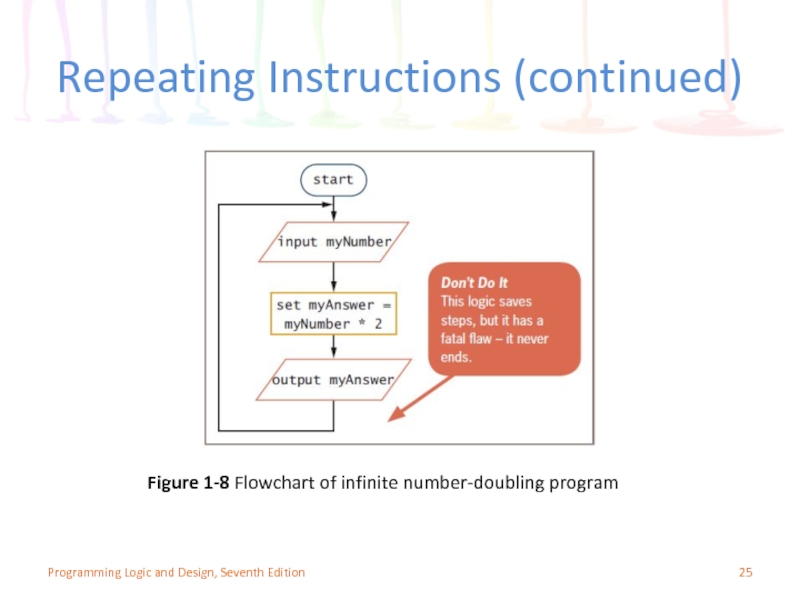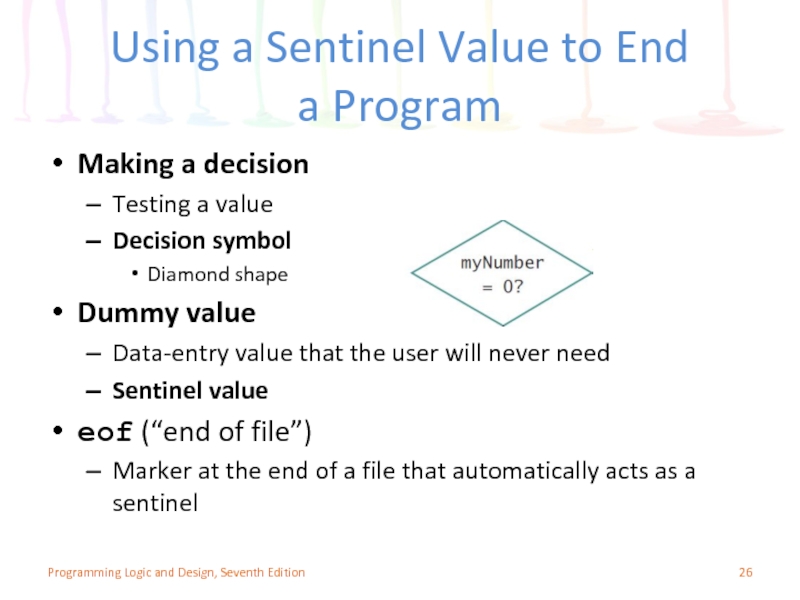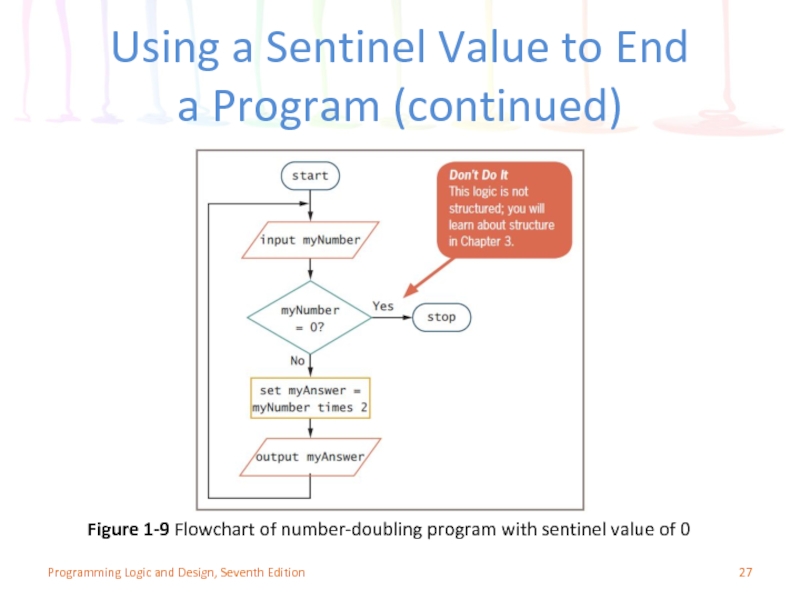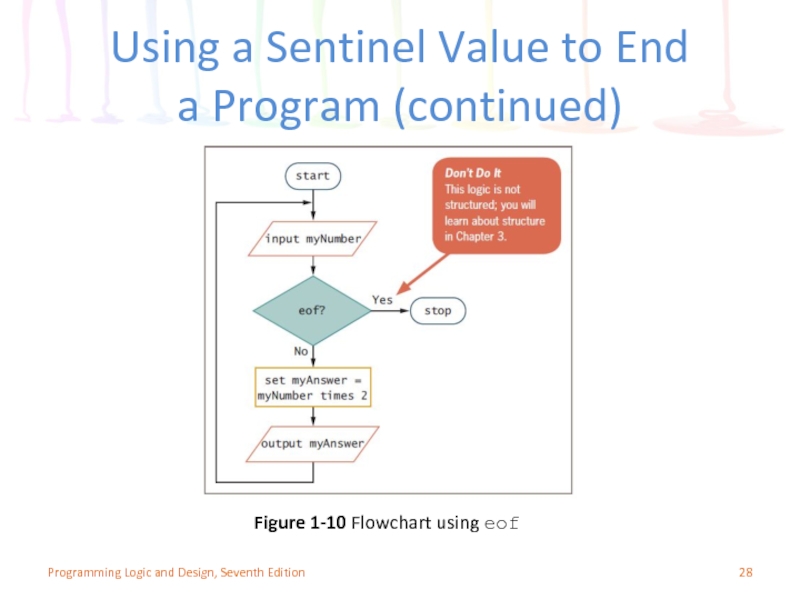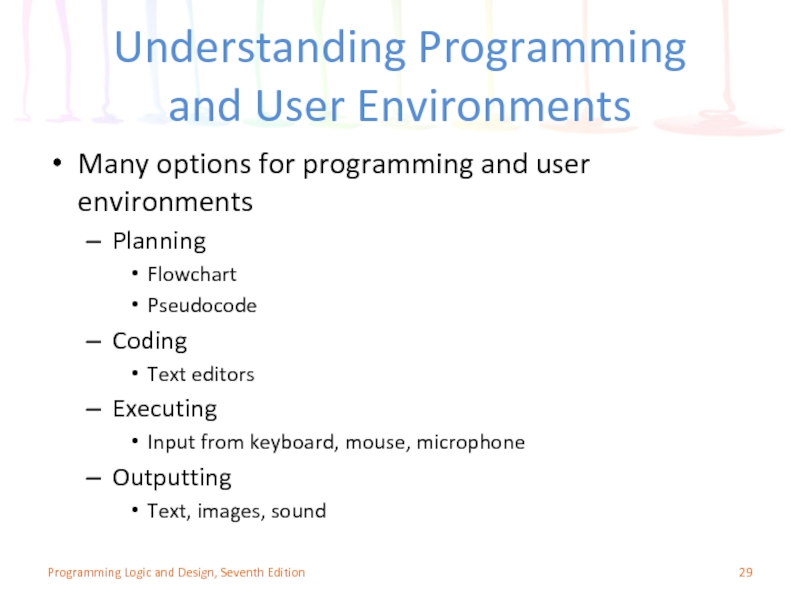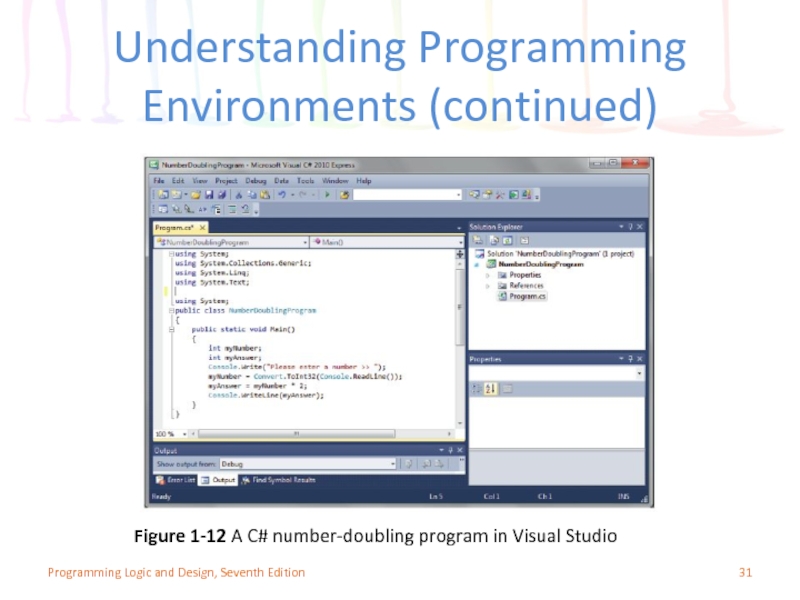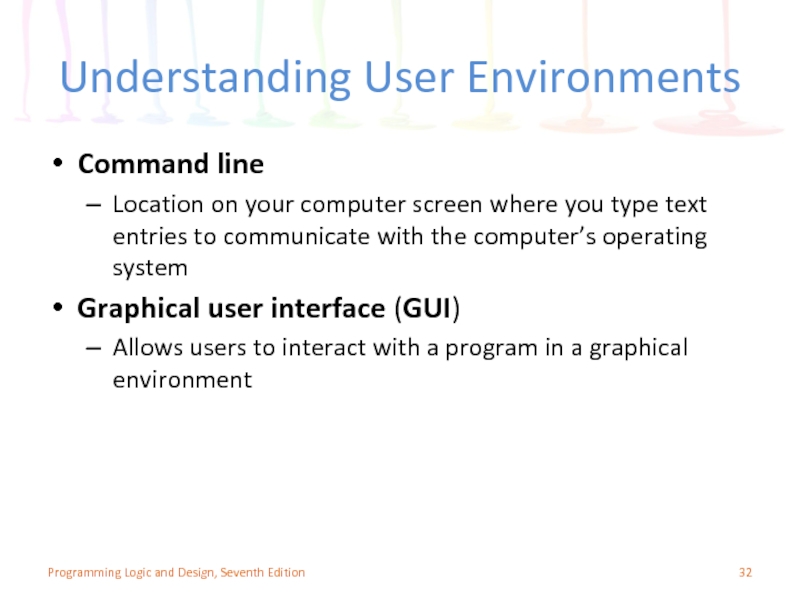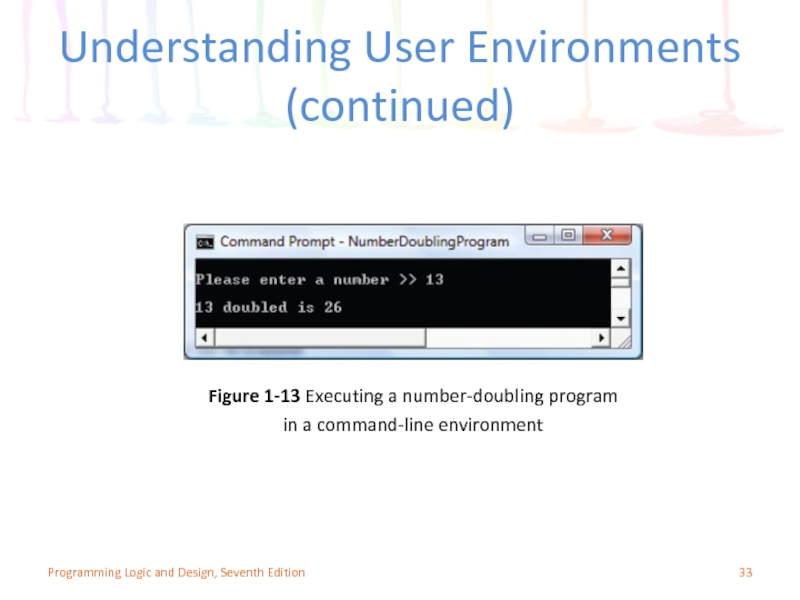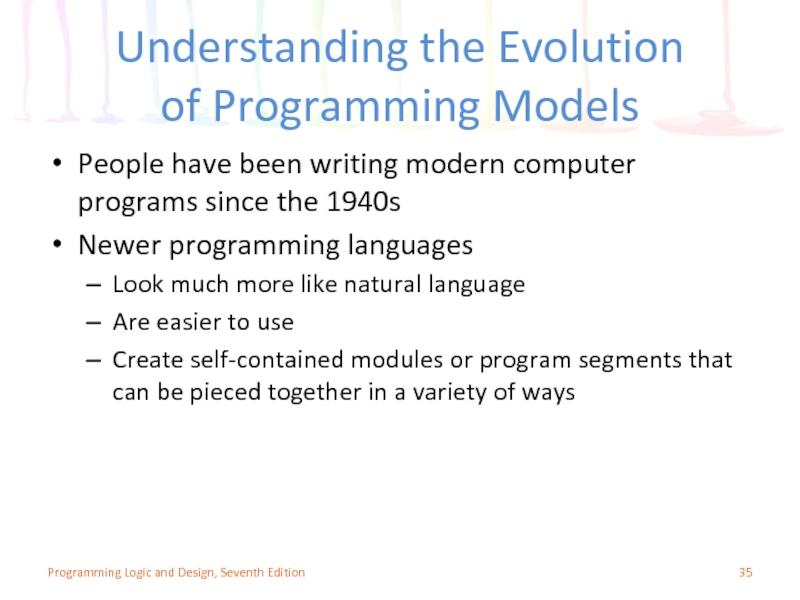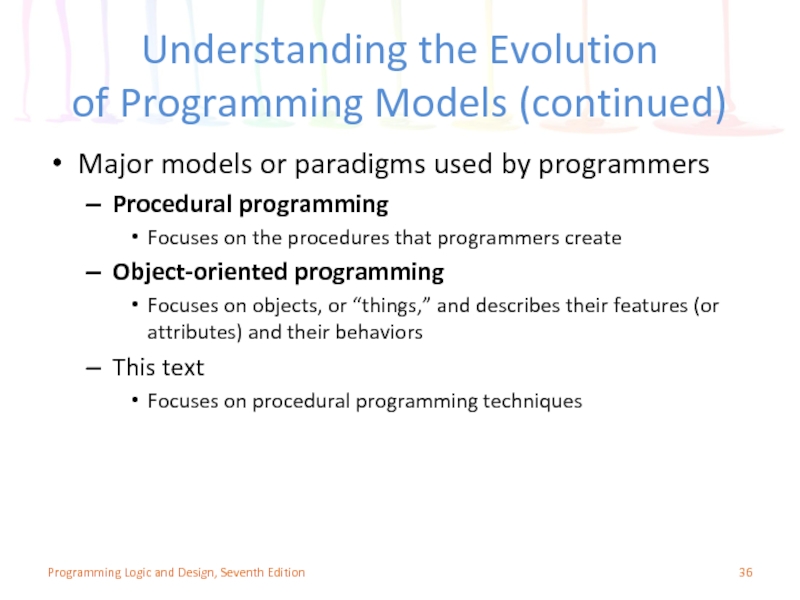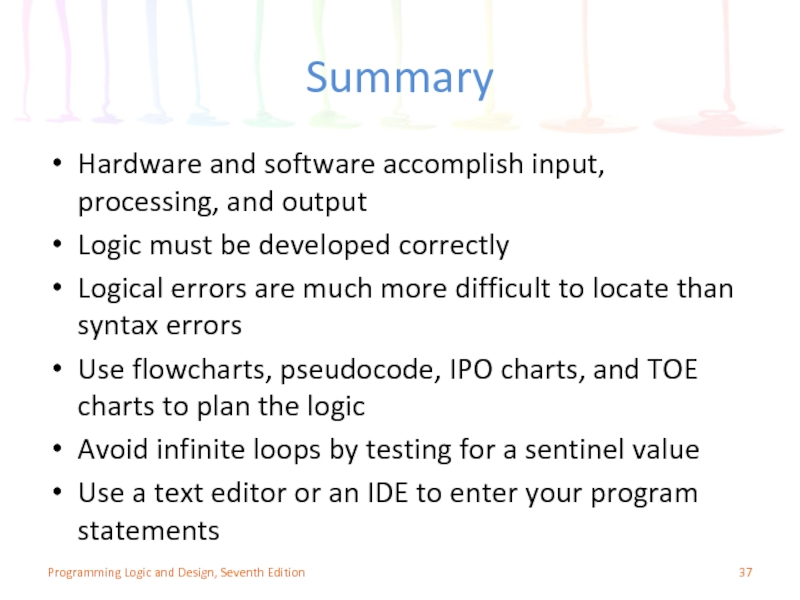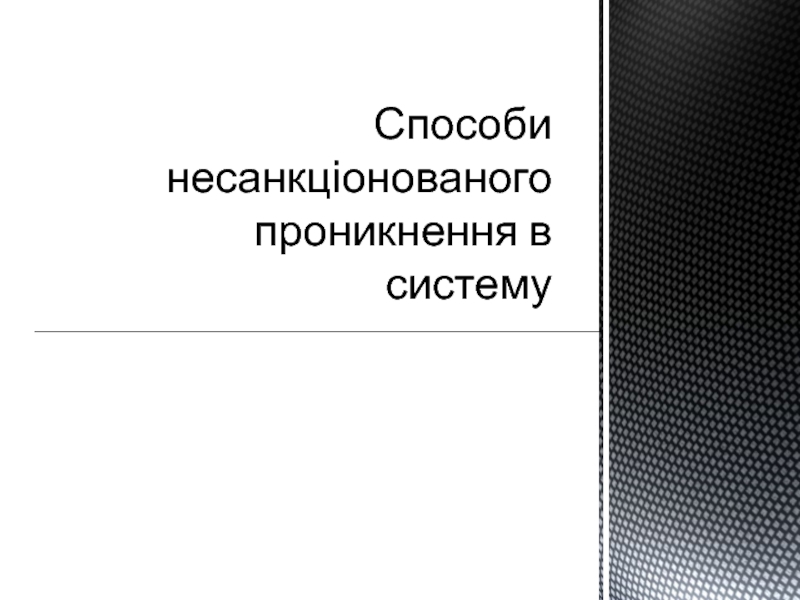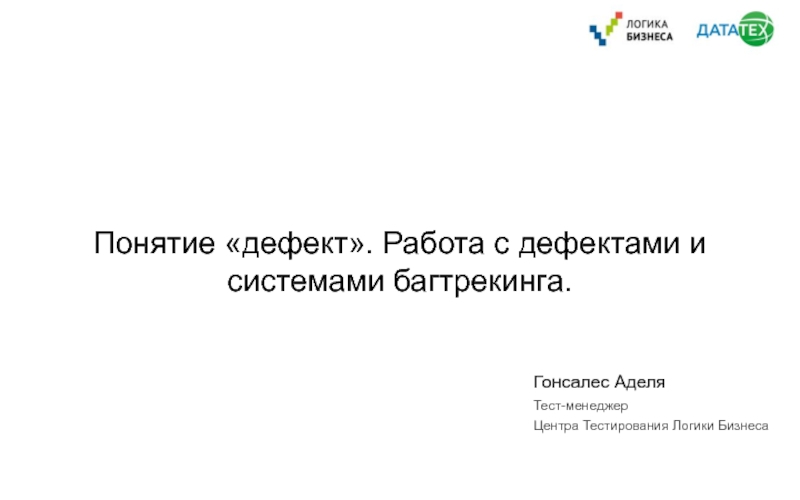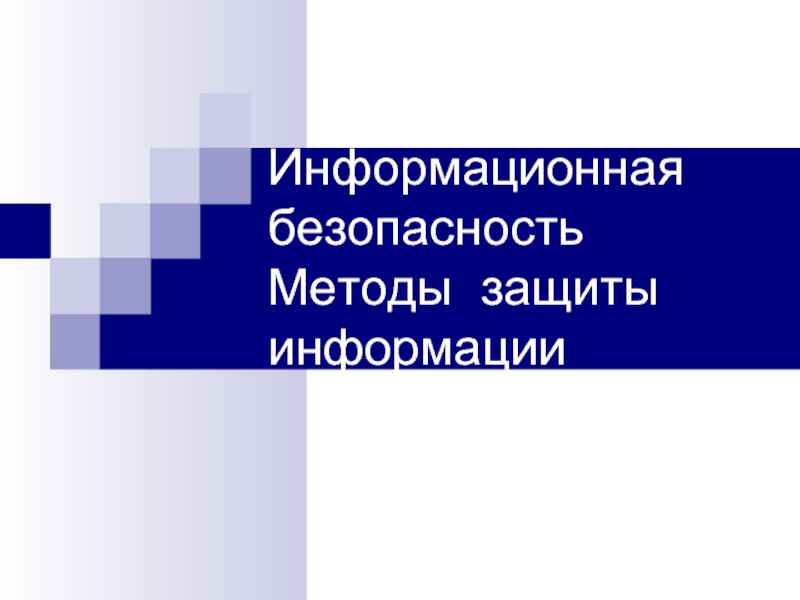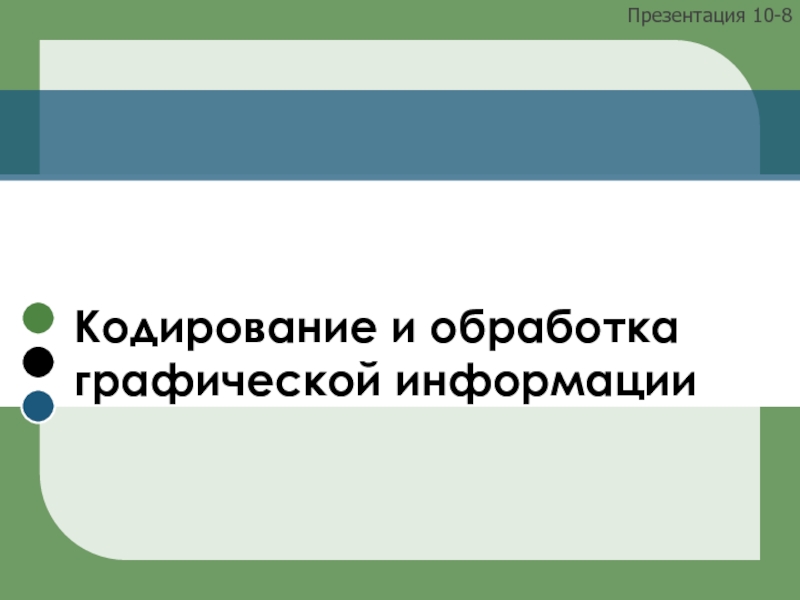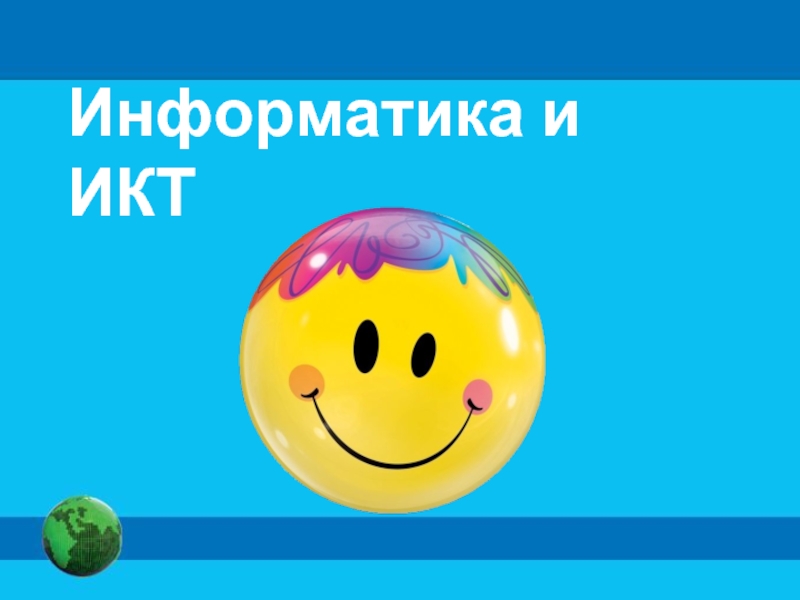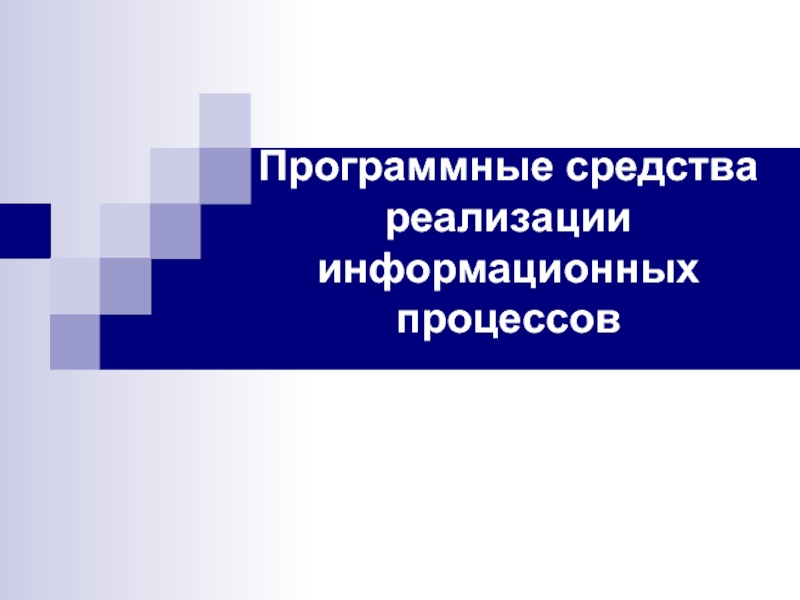- Главная
- Разное
- Дизайн
- Бизнес и предпринимательство
- Аналитика
- Образование
- Развлечения
- Красота и здоровье
- Финансы
- Государство
- Путешествия
- Спорт
- Недвижимость
- Армия
- Графика
- Культурология
- Еда и кулинария
- Лингвистика
- Английский язык
- Астрономия
- Алгебра
- Биология
- География
- Детские презентации
- Информатика
- История
- Литература
- Маркетинг
- Математика
- Медицина
- Менеджмент
- Музыка
- МХК
- Немецкий язык
- ОБЖ
- Обществознание
- Окружающий мир
- Педагогика
- Русский язык
- Технология
- Физика
- Философия
- Химия
- Шаблоны, картинки для презентаций
- Экология
- Экономика
- Юриспруденция
Programming Logic and Design Seventh Edition. Chapter 1. An Overview of Computers and Programming презентация
Содержание
- 1. Programming Logic and Design Seventh Edition. Chapter 1. An Overview of Computers and Programming
- 2. Objectives In this chapter, you will learn
- 3. Understanding Computer Systems Computer system Combination
- 4. Understanding Computer Systems (continued) Application software such
- 5. Understanding Computer Systems (continued) Output Resulting
- 6. Understanding Computer Systems (continued) Computer memory Computer’s
- 7. Understanding Simple Program Logic Program executes or
- 8. Understanding the Program Development Cycle Program development
- 9. Understanding the Program Development Cycle (continued) Figure
- 10. Understanding the Problem One of the most
- 11. Planning the Logic Heart of the programming
- 12. Coding the Program Hundreds of programming languages
- 13. Using Software to Translate the Program into
- 14. Using Software to Translate the Program into
- 15. Testing the Program Logical error Results
- 16. Putting the Program into Production Process depends
- 17. Maintaining the Program Maintenance Making changes after
- 18. Using Pseudocode Statements and Flowchart Symbols Pseudocode
- 19. Writing Pseudocode Pseudocode representation of a number-doubling
- 20. Writing Pseudocode (continued) Programmers preface their pseudocode
- 21. Drawing Flowcharts Create a flowchart Draw geometric
- 22. Drawing Flowcharts (continued) Output symbol Represents output
- 23. Drawing Flowcharts (continued) Figure 1-6 Flowchart and
- 24. Repeating Instructions Program in Figure 1-6 only
- 25. Repeating Instructions (continued) Figure 1-8 Flowchart of
- 26. Using a Sentinel Value to End a
- 27. Using a Sentinel Value to End a
- 28. Using a Sentinel Value to End a
- 29. Understanding Programming and User Environments Many options
- 30. Understanding Programming Environments Use a keyboard to
- 31. Understanding Programming Environments (continued) Figure 1-12 A
- 32. Understanding User Environments Command line Location
- 33. Understanding User Environments (continued) Figure 1-13 Executing
- 34. Understanding User Environments (continued) Figure 1-14 Executing
- 35. Understanding the Evolution of Programming Models People
- 36. Understanding the Evolution of Programming Models (continued)
- 37. Summary Hardware and software accomplish input, processing,
Слайд 2Objectives
In this chapter, you will learn about:
Computer systems
Simple program logic
The steps
Pseudocode statements and flowchart symbols
Using a sentinel value to end a program
Programming and user environments
The evolution of programming models
Programming Logic and Design, Seventh Edition
Слайд 3Understanding Computer Systems
Computer system
Combination of all the components required to
Hardware
Equipment associated with a computer
Software
Computer instructions
Tells the hardware what to do
Programs
Instructions written by programmers
Programming Logic and Design, Seventh Edition
Слайд 4Understanding Computer Systems (continued)
Application software such as word processing, spreadsheets, payroll
System software such as operating systems like Windows, Linux, or UNIX
Computer hardware and software accomplish three major operations
Input
Data items such as text, numbers, images, and sound
Processing
Calculations and comparisons performed by the central processing unit (CPU)
Programming Logic and Design, Seventh Edition
Слайд 5Understanding Computer Systems (continued)
Output
Resulting information that is sent to a
Programming language
Used to write computer instructions
Examples
Visual Basic, C#, C++, or Java
Syntax
Rules governing word usage and punctuation
Programming Logic and Design, Seventh Edition
Слайд 6Understanding Computer Systems (continued)
Computer memory
Computer’s temporary, internal storage – random access
Volatile memory – lost when the power is off
Permanent storage devices
Nonvolatile memory
Compiler or interpreter
Translates source code into machine language (binary language) statements called object code
Checks for syntax errors
Programming Logic and Design, Seventh Edition
Слайд 7Understanding Simple Program Logic
Program executes or runs
Input will be accepted, some
Programs with syntax errors cannot execute
Logical errors
Errors in program logic produce incorrect output
Logic of the computer program
Sequence of specific instructions in specific order
Variable
Named memory location whose value can vary
Programming Logic and Design, Seventh Edition
Слайд 8Understanding the Program
Development Cycle
Program development cycle
Understand the problem
Plan the logic
Code the
Use software (a compiler or interpreter) to translate the program into machine language
Test the program
Put the program into production
Maintain the program
Programming Logic and Design, Seventh Edition
Слайд 9Understanding the Program
Development Cycle (continued)
Figure 1-1 The program development cycle
Programming Logic
Слайд 10Understanding the Problem
One of the most difficult aspects of programming
Users or
People for whom a program is written
Documentation
Supporting paperwork for a program
Programming Logic and Design, Seventh Edition
Слайд 11Planning the Logic
Heart of the programming process
Most common planning tools
Flowcharts
Pseudocode
IPO charts (input, processing, and output)
TOE charts (tasks, objects, and events)
Desk-checking
Walking through a program’s logic on paper before you actually write the program
Programming Logic and Design, Seventh Edition
Слайд 12Coding the Program
Hundreds of programming languages available
Choose based on features
Similar in
Easier than the planning step
Programming Logic and Design, Seventh Edition
Слайд 13Using Software to Translate the Program into Machine Language
Translator program
Compiler or
Changes the programmer’s English-like high-level programming language into the low-level machine language
Syntax error
Misuse of a language’s grammar rules
Programmer corrects listed syntax errors
Might need to recompile the code several times
Programming Logic and Design, Seventh Edition
Слайд 14Using Software to Translate the Program into Machine Language (continued)
Figure 1-2
Programming Logic and Design, Seventh Edition
Слайд 15Testing the Program
Logical error
Results when a syntactically correct statement, but
Test
Execute the program with some sample data to see whether the results are logically correct
Debugging is the process of finding and correcting program errors
Programs should be tested with many sets of data
Programming Logic and Design, Seventh Edition
Слайд 16Putting the Program into Production
Process depends on program’s purpose
May take several
Conversion
The entire set of actions an organization must take to switch over to using a new program or set of programs
Programming Logic and Design, Seventh Edition
Слайд 17Maintaining the Program
Maintenance
Making changes after the program is put into production
Common
Maintaining previously written programs
Make changes to existing programs
Repeat the development cycle
Programming Logic and Design, Seventh Edition
Слайд 18Using Pseudocode Statements
and Flowchart Symbols
Pseudocode
English-like representation of the logical steps
Flowchart
Pictorial representation of the logical steps it takes to solve a problem
Programming Logic and Design, Seventh Edition
Слайд 19Writing Pseudocode
Pseudocode representation of a number-doubling problem
start
input myNumber
set myAnswer = myNumber
output myAnswer
stop
Programming Logic and Design, Seventh Edition
Слайд 20Writing Pseudocode (continued)
Programmers preface their pseudocode with a beginning statement like
Flexible planning tool
Programming Logic and Design, Seventh Edition
Слайд 21Drawing Flowcharts
Create a flowchart
Draw geometric shapes that contain the individual statements
Connect shapes with arrows
Input symbol
Indicates input operation
Parallelogram
Processing symbol
Contains processing statements such as arithmetic
Rectangle
Programming Logic and Design, Seventh Edition
Слайд 22Drawing Flowcharts (continued)
Output symbol
Represents output statements
Parallelogram
Flowlines
Arrows that connect steps
Terminal symbols
Start/stop symbols
Shaped
Also called lozenges
Programming Logic and Design, Seventh Edition
Слайд 23Drawing Flowcharts (continued)
Figure 1-6 Flowchart and pseudocode of program that doubles
Programming Logic and Design, Seventh Edition
Слайд 24Repeating Instructions
Program in Figure 1-6 only works for one number
Not feasible
Not feasible to add 10,000 lines of code to a program
Create a loop (repetition of a series of steps) instead
Avoid an infinite loop (repeating flow of logic that never ends)
Programming Logic and Design, Seventh Edition
Слайд 25Repeating Instructions (continued)
Figure 1-8 Flowchart of infinite number-doubling program
Programming Logic and
Слайд 26Using a Sentinel Value to End
a Program
Making a decision
Testing a value
Decision
Diamond shape
Dummy value
Data-entry value that the user will never need
Sentinel value
eof (“end of file”)
Marker at the end of a file that automatically acts as a sentinel
Programming Logic and Design, Seventh Edition
Слайд 27Using a Sentinel Value to End
a Program (continued)
Figure 1-9 Flowchart of
Programming Logic and Design, Seventh Edition
Слайд 28Using a Sentinel Value to End
a Program (continued)
Figure 1-10 Flowchart using
Programming Logic and Design, Seventh Edition
Слайд 29Understanding Programming
and User Environments
Many options for programming and user environments
Planning
Flowchart
Pseudocode
Coding
Text editors
Executing
Input
Outputting
Text, images, sound
Programming Logic and Design, Seventh Edition
Слайд 30Understanding Programming Environments
Use a keyboard to type program statements into an
Plain text editor
Similar to a word processor but without as many features
Text editor that is part of an integrated development environment (IDE)
Software package that provides an editor, a compiler, and other programming tools
Programming Logic and Design, Seventh Edition
Слайд 31Understanding Programming Environments (continued)
Figure 1-12 A C# number-doubling program in Visual
Programming Logic and Design, Seventh Edition
Слайд 32Understanding User Environments
Command line
Location on your computer screen where you
Graphical user interface (GUI)
Allows users to interact with a program in a graphical environment
Programming Logic and Design, Seventh Edition
Слайд 33Understanding User Environments (continued)
Figure 1-13 Executing a number-doubling program
in a
Programming Logic and Design, Seventh Edition
Слайд 34Understanding User Environments (continued)
Figure 1-14 Executing a number-doubling program
in a GUI
Programming Logic and Design, Seventh Edition
Слайд 35Understanding the Evolution
of Programming Models
People have been writing modern computer programs
Newer programming languages
Look much more like natural language
Are easier to use
Create self-contained modules or program segments that can be pieced together in a variety of ways
Programming Logic and Design, Seventh Edition
Слайд 36Understanding the Evolution
of Programming Models (continued)
Major models or paradigms used by
Procedural programming
Focuses on the procedures that programmers create
Object-oriented programming
Focuses on objects, or “things,” and describes their features (or attributes) and their behaviors
This text
Focuses on procedural programming techniques
Programming Logic and Design, Seventh Edition
Слайд 37Summary
Hardware and software accomplish input, processing, and output
Logic must be developed
Logical errors are much more difficult to locate than syntax errors
Use flowcharts, pseudocode, IPO charts, and TOE charts to plan the logic
Avoid infinite loops by testing for a sentinel value
Use a text editor or an IDE to enter your program statements
Programming Logic and Design, Seventh Edition
